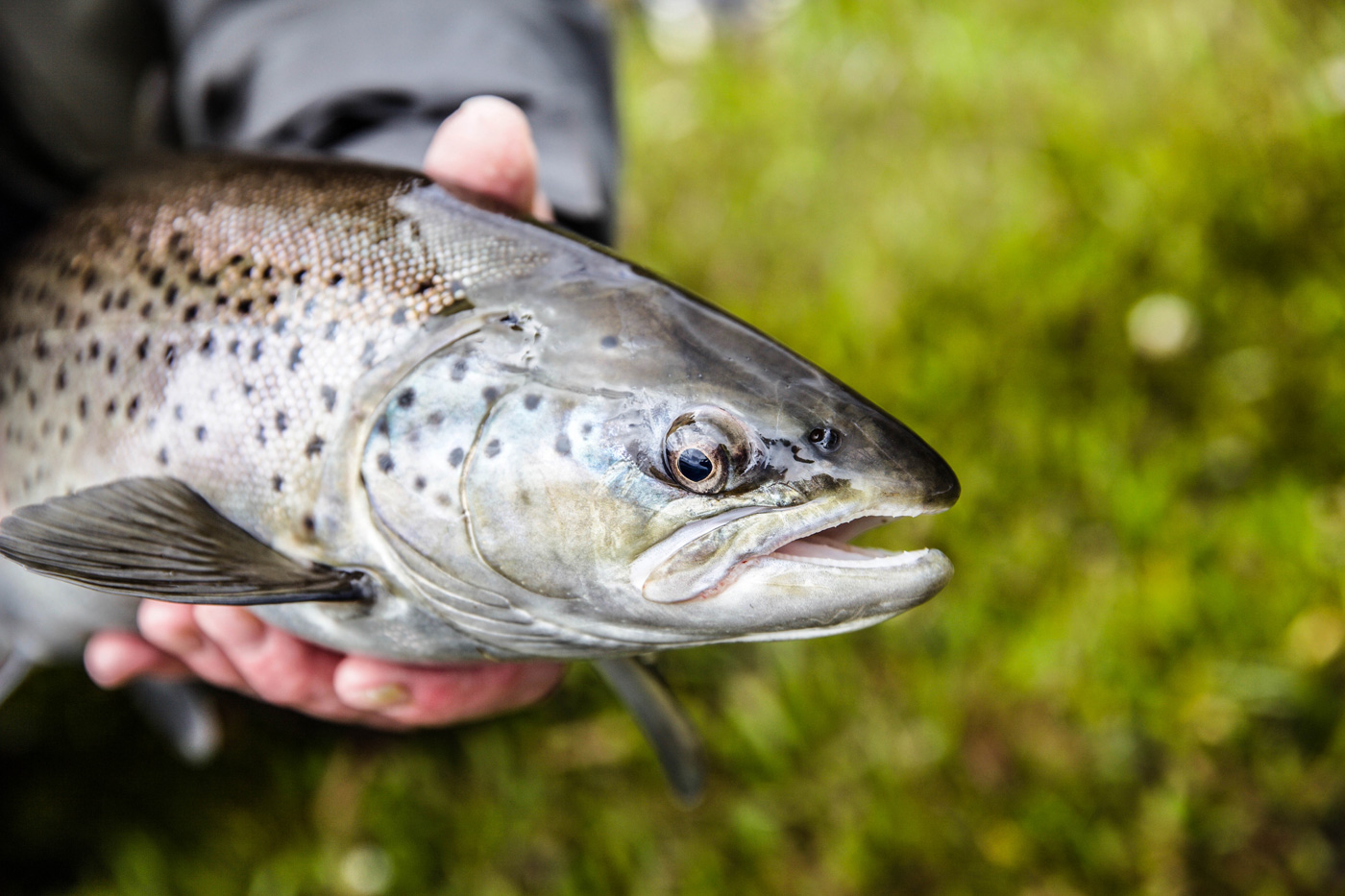I have to admit that although I am a pure salmonid angler I was quite impressed by the Falkland "Mullet".
Once I was standing on a bridge at the Frying Pan when I observed a fully grown specimen circling in majestic rounds. What a magnificent sight!
I can understand that hunting for it has become a popular maritime sport on the islands.
On fine days, countless islanders, mothers with their children, pilgrim to the shores to "hunt" this fish.
This „hunt“ is very unpretentious (probably due to the nature of the fish), even with raw red meat as bait. Oddly enough, this fish likes everything that has a reddish color. It doesn't even need a taste. It is said that you might be able to catch it with a piece of red fabric.
The Falkland "Mullet" is no mullet, but an Antarctic fish.
It is one of the Eleginopidae family, which has ventured to the southernmost land masses north of Antarctica.
Eleginops maclovinus, our Falkland "Mullet", has a very long and characteristic dorsal fin and a corresponding pectoral fin.
It has quite a prehistoric appearance, a very leathery skin with rough scales.
It can grow to over a metre and reach the age of 10 years.
Following the tides it swims into the bays and to the freshwater inlets and loves as a bottom feeder to eat crustaceans - hence its weakness for everything that is red.
Interesting fact for the educated angler:
The Falkland "Mullet" is a hermaphrodite. It changes sex with growing age (estimated as the 5th year).
Born as a male, it later becomes a female and carries within him / her a remarkably large number of small roe, which he / she needs for reproduction.







